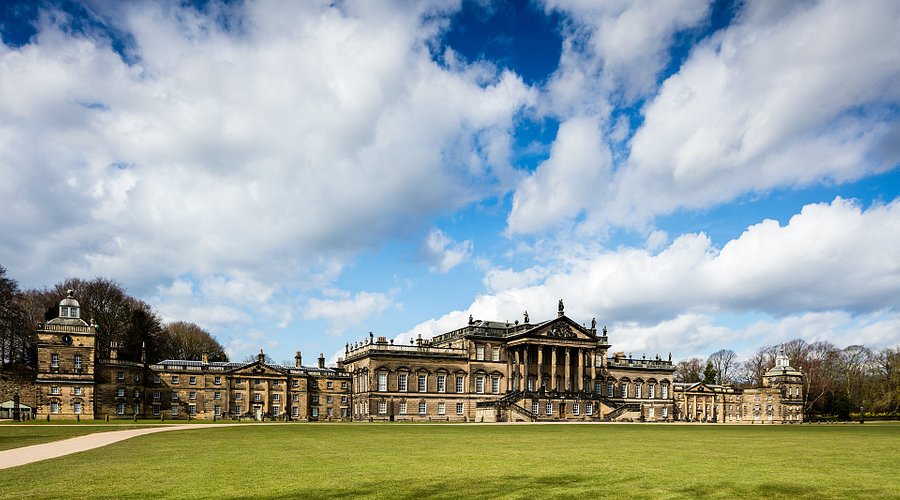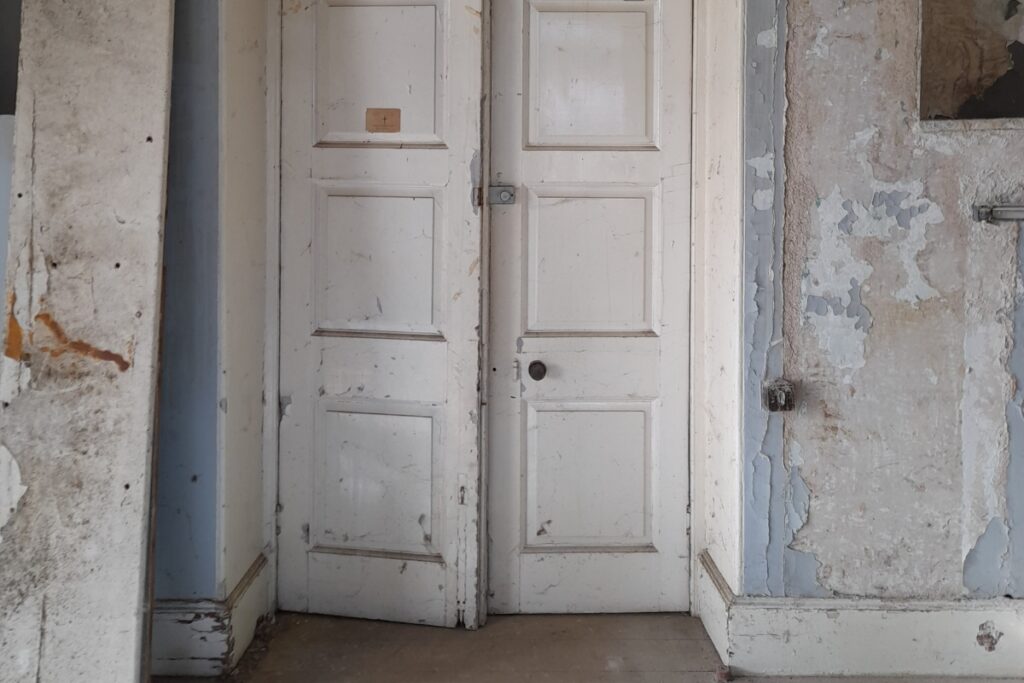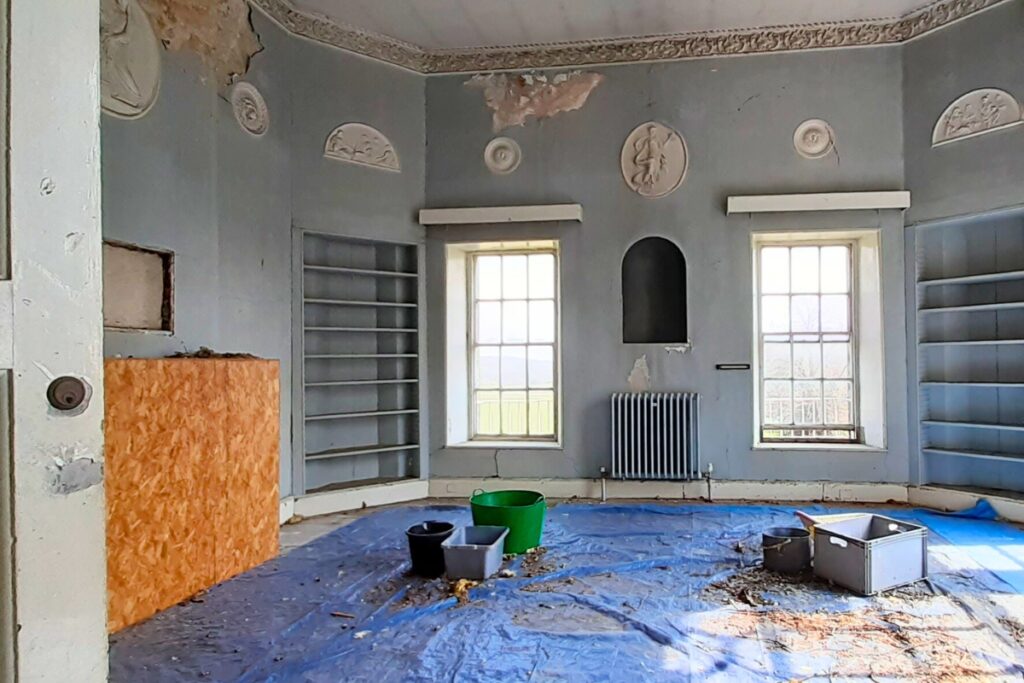
Save our Clandon
.
Menu
The South Tower at Wentworth Woodhouse
08/05/25

The Landmark Trust strives for success while the National Trust acquiesces in failure. The Landmark Trust tells about its exciting new project to recreate a lost eighteenth-century plaster ceiling based on a photograph from 1924:
Wentworth Woodhouse is one of the largest and most famous 18th-century houses in England.
This Palladian mansion near Rotherham in South Yorkshire is set in an equally important landscape, today reinstated after open-cast mining in the mid-20th century. Built by the 1st and 2nd Marquesses of Rockingham from 1730, the opulent exterior was matched by grand interiors and contents.
Working in partnership with the Wentworth Woodhouse Preservation Trust (WWPT), who are restoring this large and important site, we hope to create a Landmark for two in the South Tower of the East Front.
With a private entrance and easy access to the spectacular grounds, this secluded eyrie in one of England’s most notable houses will, we hope, become a truly elegant place to stay.

Around 1773, this upper chamber was adopted by his eventual wife Mary, 1st Marchioness of Rockingham, as her parlour. It was likely she who instructed that it be decorated with fine plasterwork and wall plaques on Classical themes. This makes the space an important survival of feminine taste in the Georgian period.
In the 1790s, an internal access to the upper chamber was created when an additional storey was added to the east wing, by the architect John Carr. The rooms adjoining the parlour became service and servant rooms and much later, from the 1950s, were used for the female students of the Lady Mabel teaching college.
While the outside of the South Tower has been fully and admirably restored to its 18th-century appearance by the Wentworth House Preservation Trust, the condition of its once-opulent interior is in urgent need.

The decorative ceiling has already been lost but we have a photo taken in 1924 that will enable us to recreate it. Fine plasterwork is crumbling; the marble chimneypiece and a plaque by sculptor Joseph Nollekens have had to be put in safe storage but can be reinstated. Some of the wall plaques are by a little-known manufactory of fired artificial stone called George Davy, who predates Mrs Coade. Paint analysis will enable us to recreate Lady Rockingham’s original colours.
This restoration is important work that will require the most skilled of craftspeople.